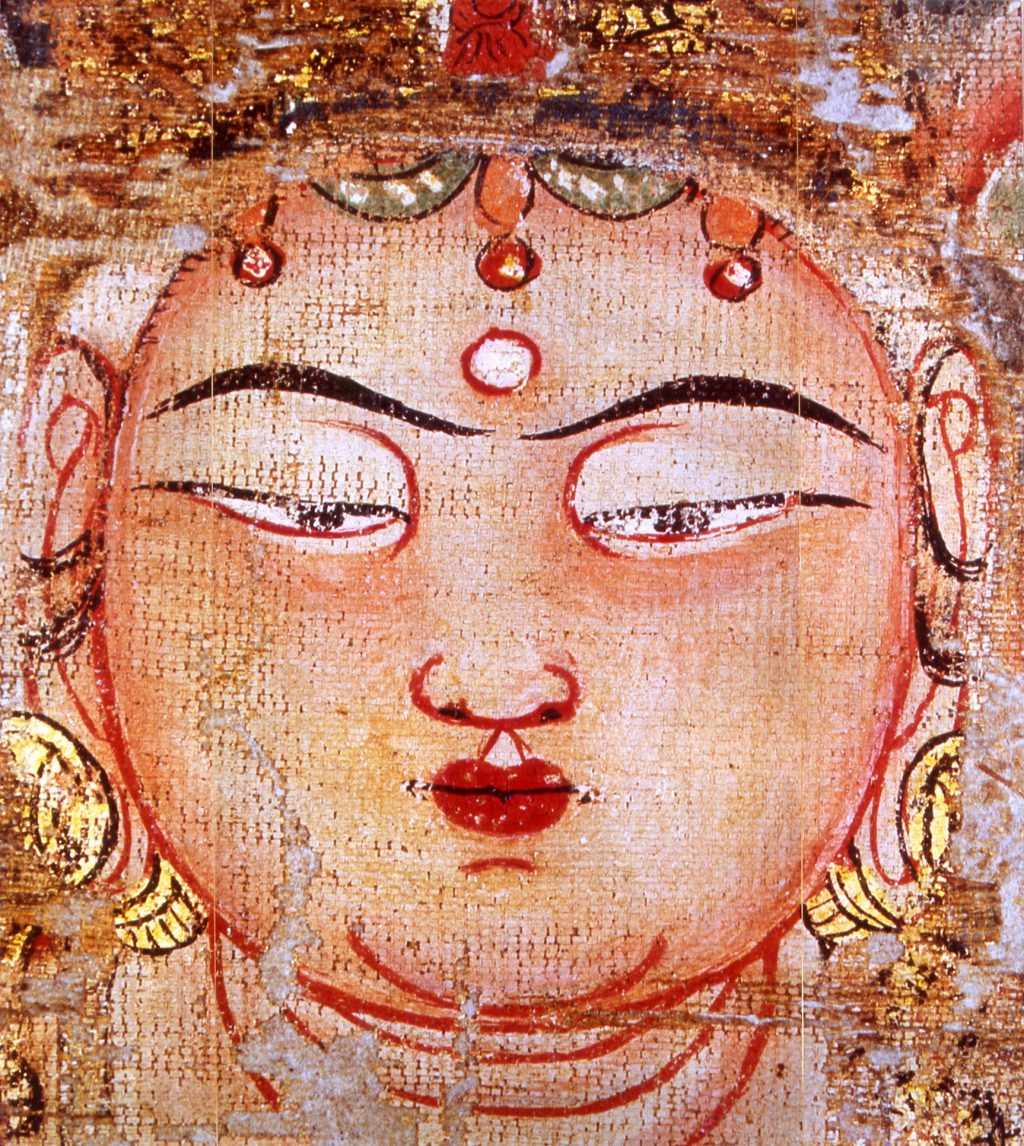Transient, Fleeting: The World of Ishimoto Yasuhiro part 13

The Eros of Abstinence
The “Mandalas of the Two Worlds” is a set of two mandalas – the “Taizokai (Womb World) Mandala” and the “Kongokai (Diamond World) Mandala” – that are kept at the Kyoo Gokoku-ji (To-ji) temple in Kyoto. Each of the two mandalas measures about 180 x 150 cm. Depicted on canvases the size of a grown-up man with his arms stretched out is the world of Dainichi Nyorai (Vairocana), the personification of absolute existence in esoteric Buddhism, with more than a thousand bodhisattvas, Buddhist saints, demons and heavenly maidens.
It is inferred that these mandalas were created in the second half of the 9th century, which makes them the oldest colored silk paintings of esoteric Buddhist mandalas in Japan. Last year they were on special display at the Toji-temple as part of the celebration of the 1,200th anniversary of the return of Kōbō-Daishi (also known as Kukai), but unfortunately I didn’t manage to go and see them. But even if I had the chance to be there, one could only worship the mandalas from far away and in a dark setting, so I guess I wouldn’t have been able to see exactly what is depicted anyway.
Ishimoto photographed these mandalas at the Toji-temple for a Kukai special of the monthly journal The Sun in 1973. In the face of the bodhisattva in the mandalas, Ishimoto sensed a sort of eroticism that flows in the austere world of religious painting, and was quite fascinated by that. As he was refused to take photos of the mandalas “because of their high degree of decay,” Ishimoto considered shooting different ones, but he didn’t give up and visited the temple again, and as the mandalas happened to be part of a special exhibition this time around, he negotiated once again and eventually obtained conditional permission to photograph part of the displays.
When Ishimoto let an official from the temple look through the finder during these shootings, that person was amazed to see just how rich the expression and vivid the colors were. Understanding the significance of photographing these items, he ultimately gave Ishimoto permission to do proper photo sessions. The results went on to travel around Japan and places around the world as part of the Mandala exhibition, and Heibonsha subsequently published an ultra-luxurious special edition book. In 1978, Mandala received the Minister of Education Award for Fine Arts and the Annual Award of The Photographic Society of Japan.
In the sessions photographing the mandalas, Ishimoto encountered for the first time the term fuji (“singularity”). It expresses a world-view that defines positive and negative, reason and intelligence, good and evil, and various other contrastive pairs as being in fact “two yet at once not two,” and aims to see in all of these concepts the whole of the universe.
In Katsura Ishimoto describes his encounter with the mandala as follows. ”Up to now, I have been eliminating superfluous elements as much as possible for the sake of pureness. But is pureness really something so narrow-minded that it forbids any kind of addition? Isn’t there a form of beauty that always remains as it is, no matter if you add something or take something away?” Furthermore, he felt a growing desire to look once again at the ornamentation of the Katsura villa that he used to regard as superfluous, and eventually returned to take another set of photos. A look at various other works suggests that the experience of photographing the mandalas ultimately had a profound influence not only on the Katsura project, but on everything that Ishimoto did after that.
One of the few series of color photographs among Ishimoto’s mainly black-and-white catalogue of works, these Katsura photos were made at a time when Ishimoto switched to a new developing solution, which may be related to the fact that the film has become discolored, so unfortunately we can no longer marvel at those vivid colors today. Considering the recent progress in computer technology for color restoration, I do hope that the precious historical documents that these ”Mandala” photos are will get their original shine back some day.
(Published on April 4, 2006)
*Part of the film was digitally restored, and the photographs were eventually published in Ryogai Mandala: The World of “Den-Shingon-In Ryogai Mandara” at The Toji in Kyoto (Heibonsha, 2011).
Kageyama Chinatsu, curator at the Museum of Art, Kochi
Ishimoto Yasuhiro Photo Center

